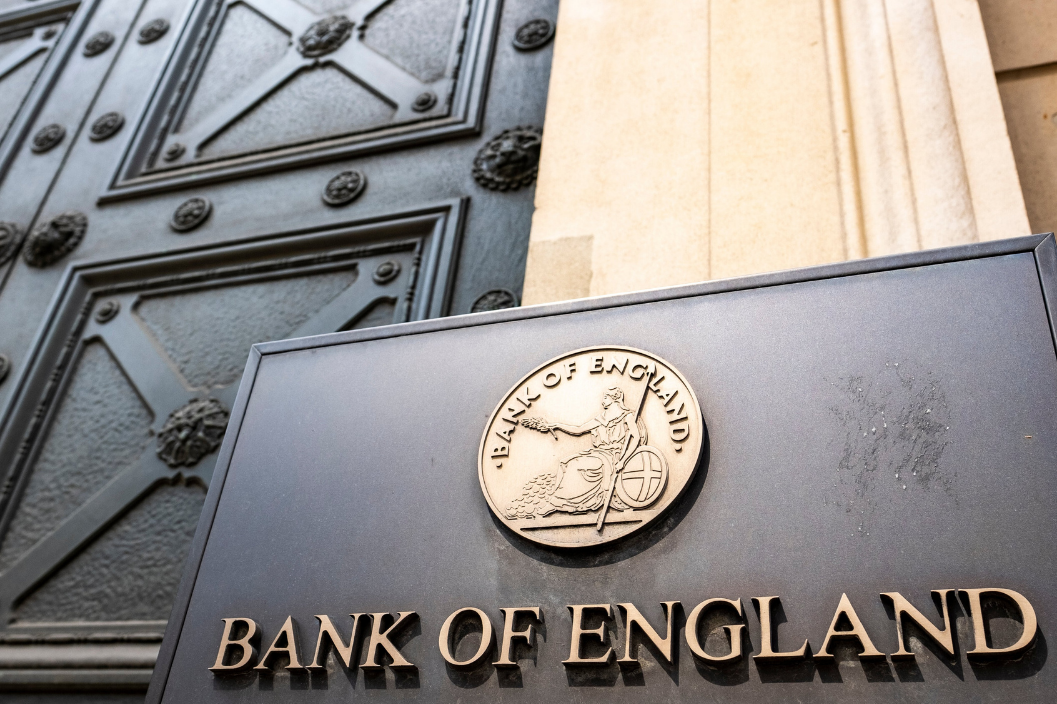How might stagflation affect investments?
The term ‘stagflation’ was coined in 1965 by former Chancellor of the Exchequer, Iain Macleod. A portmanteau of stagnation and inflation, the word portrays the challenging combination of a rising general price level and weak economic growth - a concept many investors have recently been forced to become increasingly aware of.
With the UK economy currently facing a high likelihood of stagflation, partially caused by a similar scenario to the oil crisis of the 1970s, what potential impacts could this economic situation have on investors and their investments?
Investing during stagflation can require creative portfolio management, placing importance on backing a well-diversified range of assets. Subsequently, researching a variety of asset classes, companies, industries and geographies that display potential to perform more favourably can present an opportunity for investors to shield the value of their capital - and even potentially generate considerable returns - against a backdrop of high inflation and slow growth.
Traditional investments
For investors who mainly operate in the space of equities, bonds and cash investments, stagflation could pose some significant hurdles.
Equities
Firstly, equities remain in the midst of a broad sell-off. The S&P 500 has lost more than 25% of its value YTD, whilst the NASDAQ 100 has lost over 34% (as of 13th Oct. 2022). As outlined by the World Gold Council research team:
Stagflationary episodes can be particularly brutal to equity investors, who have historically seen the worst average returns during these phases, squeezed by rising costs and falling revenues.
However, it should be noted that not all equity indices respond to stagflation in the same manner - the FTSE 100 has also lost value YTD, but only 10.26% (as of 13th Oct. 2022).
Additionally, the volatile nature of stock markets can provide scope for significant future value rises when shares are bought at a low price during a bear market. It is also understood that long-term investments into stock indices can sometimes absorb short-term fluctuations. So, investors could overcome economic shocks, and even long-term recessions, if shares are held for a long enough period.
Bonds
Further hindering the appropriateness of traditional investments during stagflation, holders of low-yield bonds and bond funds may also face value erosion, as higher prices throughout the economy can reduce the purchasing power of bond returns.
Although unlikely to provide considerable returns, low-risk investments such as these could prove to be important tools for investors during times of economic turbulence, acting as a form of financial ‘safety net’ (should bond interest rates outperform the current level of inflation at the time of investment).
Moreover, some bond types, such as property bonds, can offer comparatively higher rates of return (between approximately 4% and 15% in the UK) and subsequently create scope for investors to target inflation-beating returns. This specific form of bond may be particularly attractive to sophisticated investors during stagflation as property investments are generally deemed to be one of the most resilient asset classes.
Cash investments
Thirdly, traditional cash investments are often particularly low risk. As a result, they don’t often yield as considerable growth when compared with alternative asset classes such as venture capital, which (under schemes such as the Seed Enterprise Investment Scheme) often target money-on-money returns upwards of 10x.
Whilst cash investments can provide stable returns, these are likely to become quickly eroded, similarly to some low-yield bonds, if inflation rises to a disproportionately higher rate.
Overall, it can be crucial that experienced investors consider their balance of defensive assets and high-yield investments during periods of stagflation. Regardless of the risks both have the ability to pose - whether via capital loss or capital erosion - both can play important roles in constructing an effectively diversified portfolio.
Property
One of the oldest forms of investment, property tends to display fairly low correlation with traditional markets. Partially because of this, property can be an important area for investors to diversify into during times of stagflation.
On average, property outperformed stocks and bonds in the 1970s (when stagflation was last widespread). More specifically, when buying a physical property with a fixed mortgage, the house price typically adjusts upwards with inflation over time, while the fixed mortgage rate payments can be eroded away by inflation.
Whilst buying or building a physical property already carries many costs, such as obtaining planning permission, conducting maintenance and keeping up with ever-changing tax legislation (particularly targeting buy-to-let) to name just a few, many other avenues exist for indirectly investing into property.
To name one example, property bonds are a legally binding agreement between an investor and a property developer. The investor's capital acts as a loan to the developer, and a contract is devised between the two parties to outline how the investment will be used, how the capital is secured, the interest payable, and the maturity date of the bond.
From an investor’s perspective, the appeal of property bonds often lies in the higher target interest rates they possess when compared to traditional routes, with most property bonds targeting between 4% and 8% APR (compared to government bonds, which usually target <4%).
Joint venture (JV) property investing represents another form of indirect property investment. This involves investors and property developers combining finance with industry expertise to deliver a range of property projects, from residential developments to mixed-use schemes. When compared with traditional routes, JV property investments can be attractive due to the potential for high returns, synergy benefits, and a relatively ‘hands-off’ role for investors.
Read More: Joint Venture Property Investing: Everything You Need to Know
When compared with direct physical property investments, both property bonds and JV property investments could prove to be relatively easier and more attractive for experienced investors, in part due to the lack of added costs, the less active role, and the potential for significant financial returns.
This combination of factors may present property investments, particularly bonds and property joint ventures, as appealing during stagflation. The lack of correlation with traditional markets and the potential for sustained returns can provide some level of stability for investors during economic turbulence.
Gold and silver
Often used as a hedge against inflation, the value of precious metals, particularly gold, tends to change in line with the general price level. The value of gold and silver can increase even as the value of currencies drop, as the pound sterling has in Q3 of 2022 (plunging to a new low of £1.03 against the dollar).
Between 2012 and 2022, gold price patterns have been strongly linked with the University of Michigan Inflation Expectations Index, which measures the inflation rate anticipated by consumers over the next 12 months.
Furthermore, gold has demonstrated a strong inverse relationship with the US consumer confidence index over the past 10 years. An improvement in consumer confidence has been associated with falling gold prices, and vice versa. This means that during a downturn, recession, or period of stagflation (when consumer confidence is likely to be low), gold prices may be on the rise, potentially representing a useful defensive asset for investors.
Though investing in gold may not necessarily generate income, it can act as a ‘safe-haven’ asset, helping investors to offset stock market volatility and preserve the value of their wealth.
Commodities
Agricultural and oil commodities, in particular, are likely to be positioned to perform well during stagflation. This is because these specific commodities are classed as essential goods, suggesting that demand is relatively inelastic. In other words, as these goods are generally a ‘need’ rather than a ‘want’, demand is likely to remain fairly constant even as prices rise. Subsequently, this can signal potential for commodity-focused firms to generate increased revenue, which could be passed on to investors in the form of dividends and rising share prices.
Overall, investing into commodities can act as a useful hedge against inflation. Commodity prices generally display strong correlation to national and global inflation rates, therefore helping experienced investors to maintain, and potentially grow, their wealth during challenging economic times.
Although, it should be understood that some commodity investments, particularly related to oil, can pose serious ethical and environmental concerns, which are highly likely to conflict with the values of many investors placing a strong emphasis on impact-driven ESG investing, suggesting that other forms of inflation hedges may be preferred.
Private equity
Considerable data demonstrates private equity’s outperformance during all types of economic periods. Research published by BlackRock, a multinational investment company, outlines a hypothetical investment of $100 USD into five different financial instruments on 1st January 1980. Assuming all proceeds are reinvested, private equity significantly outperforms, with an ending value of $27,024 USD, equalling an annual time-weighted return of 15.0%.
As well as favourable performance in general, PE has the potential to significantly outperform other asset classes during dampened economic climates.
A study on PE returns, conducted by Cambridge Associates, discovered that funds raised in 2001 and 2002 (following the dot.com bubble) and 2009 (following the financial crisis) generated the most favourable returns of any year between the time period of 1994 and 2016. This is partly because investing during a depressed economic period can provide a more favourable valuation when considering the purchase price relative to earnings.
Venture capital
Venture capital (VC) is a specific form of private equity that could perform well during stagflation.
Referring to investments into unlisted early-stage companies, VC often seeks out opportunities where return potential is great - partly in order to compensate for the elevated risk levels. Many forms of VC investment are also eligible for generous Government-backed tax wrappers, including the Enterprise Investment Scheme (EIS) and the Seed Enterprise Investment Scheme, which can offer investors a host of tax benefits in order to mitigate some of the risk associated with investing into startups.
Additionally, a number of extensions have been announced regarding the SEIS that could encourage further venture capital investment into particularly early-stage startups.
Access: Free Guide to Tax Efficient Investing
Whilst tax advantages can be useful for helping to minimise the risk level of many VC opportunities, they can also be highly beneficial for investors during times of high inflation as the potential financial rewards can essentially be enhanced, by offering investors up to 50% income tax relief and capital gains tax (CGT) exemption, to name a few examples.
Importance of diversification
During times of stagflation investors may aim to balance their portfolio effectively, adopting a relatively defensive approach whilst still seeking inflation-beating returns.
As defensive assets have a lower risk level than other forms of investment, investors often turn to these during times of economic turbulence to act as a form of safety net. But these lower risk investments often yield lower returns, which can become quickly eroded by inflation.
In order to combat the lower yields often provided by defensive assets, investors may look to alternative asset classes, such as property, venture capital and private equity, to try and achieve inflation-beating returns. Building a well-rounded portfolio, consisting of both low- and high-risk investments across a range of asset classes and industries, can be a useful strategy for investors to adopt during stagflation. This is because diversification can help to spread overall investment risk, so that if inflationary pressure significantly harms one investment, a range of other opportunities exist with potential to counteract this.
Striking a suitable balance between ‘safe-haven’ investments and high-return investments, based around personal investment goals and, of course, the economic environment, could be the key for investors to create a well-diversified portfolio which is set to perform well throughout stagflationary times.
%20(3)%20(2).jpg)









